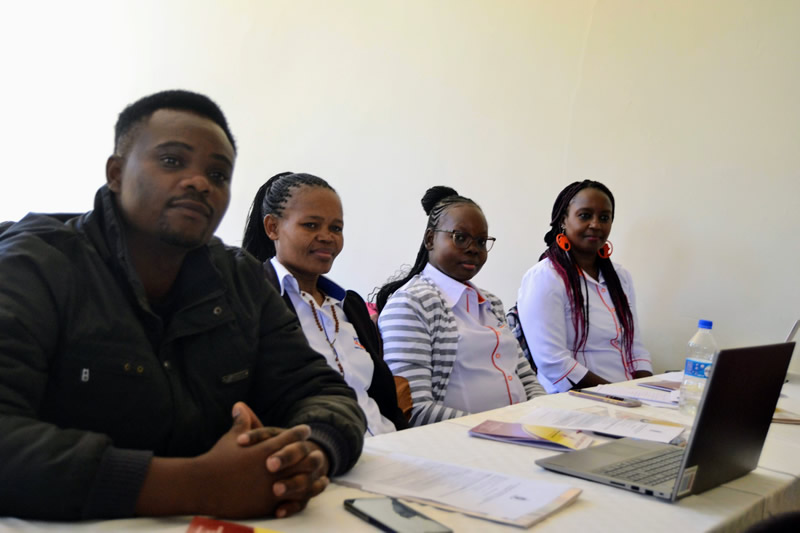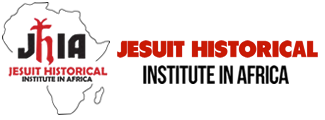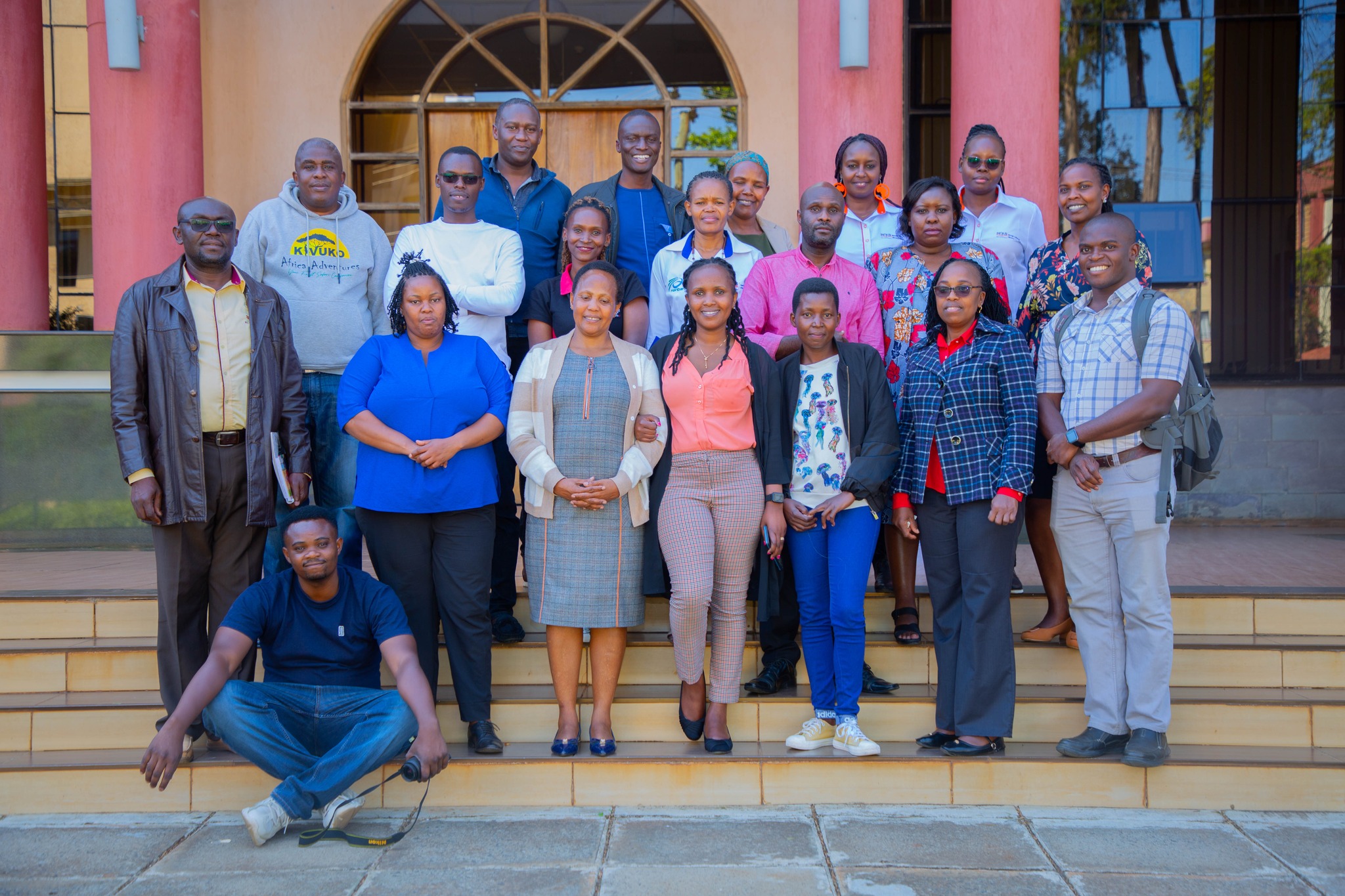The recently held Librarians Gathering at St. Pauls’ University under the theme of Needs Assessment of Setting up an Archive was a joint venture of the Jesuit Historical Institute in Africa (JHIA) and St. Pauls’ University. The gathering attracted a good number of religious Universities and institutions around Nairobi and its neighboring County. It gave an insight into the importance of carrying out a needs assessment before establishing an Archive. The training focused on understanding the background of such an exercise. Participants were privileged to have an archiving expert from the Kenya National Archives and Documentation Service (KNADS) who defined a needs assessment as a “Process of determining the needs of an organization and setting the criteria of how to best allocate resources for improvement, in this case, for the establishment of an archive.” She cautioned that the process of conducting a needs assessment is easy but only becomes complicated when it is not handled professionally.
The following are some of the requirements institutions need to consider before establishing an archive.
- The collection of the archival materials, type, value, and users (survey and appraisal, retention schedule).
- Legal framework: policy in which the archive is anchored.
- Building facility.
- Storage space and equipment.
- Trained staff.
- Funding/Financial Resources.
The University Librarian of St. Paul’s made an opening remark with an emphasis on the journey embraced by the institution since its inception and major activities that generate positive feedback. Her value and relevance were emphasized in the light of certain archival requirements that were unique to the university such as preserving the institutional memory, the departmental records, the significant events of the institution, and the physical artifacts like the building plans. Through placing great value on these facets, St. Paul’s University instills a culture that strives to conserve its patrimony, sustain scholarly research, and guarantee the perpetuity of its legacy long into the future.

Librarians keenly follow training during the 3rd Librarians Gathering
According to the trainer, it is always advisable to carry out a needs assessment before embarking on the actual setting up of an archive because the preliminary planning will act as a foundation for making sure that the archive aligns with the specific requirements and goals of its intended users. When conducting a needs assessment, it is paramount to observe some level of thoroughness and involve key players like researchers, historians, and the larger community, in order to effectively address the needs by customizing the extent and resources available to correct informational gaps while conserving precious collection.
Another crucial aspect of doing the needs assessment process is to broaden one’s knowledge base of the cultural, historical, and societal relevance of the collections to be preserved in an archive. It also aids the librarians/archivists in knowing key themes, subject areas, and arrangements that necessitate conservation, considering that the archive established serves as an elaborate bank of information for current and posterity measures.
Discovering the valid criteria for starting up an archive requires a conscientious approach. In the course of recent training, participants become acquainted with the necessity of the basic needs assessment and with the introduction of the most crucial startup prerequisites for a historical archive establishment. The trainer put some emphasis on several key elements that need to be in place both – before and during the actual launch.
Setting up the archive consists of several barrier credits, which are designed also for a great purpose to combat the improper management and the preservation of records. The main challenges include Disorganized Record Storage: The heaps of files dumped into the general archives could result in their retrieval being hard, as well as with materials becoming corroded and poor. Technological Hurdles: Problems of digitalization, data security, and software compatibility need to be solved for there to be proper electronic record management. Accession Registry Maintenance: Getting to a precise registry is indispensable, the function of which to record the purchase and possession of records is to keep the provenance and status of records under control. Assumptions: Confronting the misconceptions about archival practices, which include underestimation of the resources needed and also missing the preservation methods, concerns the establishment of a successful archive.
The librarian’s gathering provided valuable insights into the intricate process of conducting needs assessments and fulfilling the essential requirements for setting up an archive. By understanding the purpose of needs assessments and addressing key considerations such as collection policies, preservation strategies, metadata standards, and accessibility, librarians can effectively establish archives that serve as invaluable repositories of knowledge and cultural heritage. As custodians of information, librarians and archivists play a vital role in preserving the past and shaping the future through the thoughtful curation and stewardship of archival materials.
The top-notch IT Managed Services provider, Silicon Overdrive, contributed to the views on archiving and preservation by an innovative and technological use of information. They emphasized three key objectives: making access easier, orchestrating collaboration, and conservation, which are the three main insights. They gave their opinion on how to approach the project start-up by recommending manual handling of the archives for more effective digitalization policies for digital-born resources and teamwork for standardization. They recommended utilizing world-class cloud hosting services like Amazon Web Services (AWS) to ensure that backups are safe and that the system will be automatically updated, specifying AWS’s partnering initiatives with African educational institutions to help them transition into cloud technology effortlessly. By and large, those recommendations from Silicon Overdrive were meant to improve the efficiency of archiving procedures and to bring more benefit to instructors and scholars from all walks of life by making educational materials available for wider distribution and preservation.
At the end of the training, participants were given an assignment to design a needs assessment template, carry out a needs assessment, and undertake a survey and appraisal of their collection. The outcomes and proposals derived from this assessment should be shared with the organization’s board of directors or administrators to garner their support. Furthermore, these findings should serve as the foundation for soliciting funding from relevant agencies. To address the obstacles, we face in the establishment of an archive calls for the joint participation of a number of actors, including thoughtful planning, investment in resources, and upholding best practices. With the identification and intervention of these complexities at their very beginnings, institutions will be in an advantageous position to develop an archive system that stores and makes easily available a perceived feature of history for future generations.
The Catholic University of Eastern Africa (CUEA) will host the next Librarians’ Gathering on 24th August 2024.
By Geoffrey Obatsa
Administrative Assistant, JHIA




